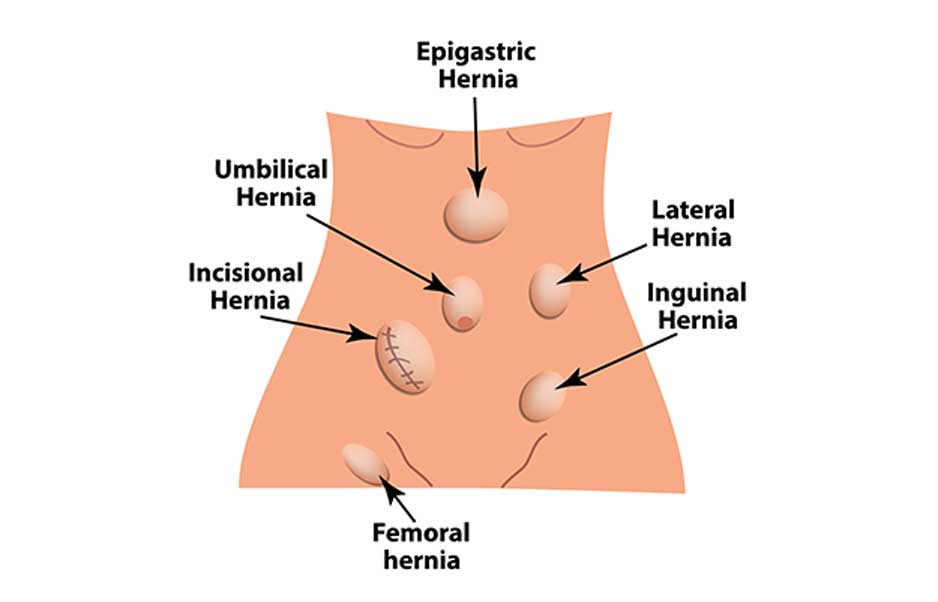
A bulge near the groin or thigh is a common sign of a femoral hernia (femorocele).
This is a type of hernia that develops when tissues push through an abdominal weak spot in the femoral canal. This is a short tube in the groin area where the femoral artery and related veins and nerves are located. Femoral hernias are considered rare and often produce little or no significant symptoms.
Treatment is necessary if blood flow is blocked by the hernia, or when symptoms are disruptive or potentially life-threatening.
What Causes Femoral Hernias?
More common in women, femoral hernias sometimes develop without any known cause. Some individuals are born with a femoral canal that's weak, while other people experience problems later in life when tissues in this area progressively weaken over time. Factors that may contribute to a femoral hernia include urination difficulties due to an enlarged prostate, childbirth, chronic constipation, excess weight, and over-exertion when lifting heavy items or exercising. It's usually larger femoral hernias that produce signs and symptoms that may include:
- A visible groin bulge by the upper thigh
- Pain that's worse when standing up
- Discomfort triggered by any type of strain in this area


How Is a Femoral Hernia Diagnosed?
A physical examination performed to diagnosis a possible femoral hernia normally involves gentle pushing, especially if there is no visible bulge in the affected area. If there is a noticeable bulge, the area may be felt instead to avoid causing further discomfort. An ultrasound may be done to positively confirm that a femoral hernia is the source of the pain being experienced. Additional image tests may be done to detect any weaknesses in the abdominal wall if no discernible bulge is present.
Treatment Options
If intestinal or bowel tissue die due to some type of intestinal obstruction caused by a femoral hernia, strangulation occurs. This is considered an emergency situation that requires immediate treatment. Otherwise, the only treatment recommended may be periodic observation during routine physical exams if there are no significant symptoms experienced.
With moderate to large hernias in the femoral canal area, surgery is usually the recommended treatment. Open or laparoscopic may be performed to return the protruding tissue to its normal position and sew the hole up. If the tear is large, mesh may be placed over the affected area to close the hole.
Laparoscopic surgery is becoming an increasingly common surgical option for surgical hernia repair. During the procedure, only three or four keyhole-sized incisions are needed to correct damage from a femoral hernia instead of one larger one. Patients considered good candidates for hernia surgery performed this way often benefit from:
- Minimal scarring
- Less blood loss and post-surgical pain
- A shorter healing and recovery time
Generally, the only time a femoral hernia is considered serious or potentially life-threatening is if strangulation occurs. If surgery is necessary, patients usually fully recovery after about six weeks. The risk of developing this type of hernia may be reduced by maintaining a healthy weight and eating foods rich in fiber to minimize issues with staining while making bowel movements. Avoiding heavy lifting or exertion, especially anything involving repetitious movements, can also be helpful.
